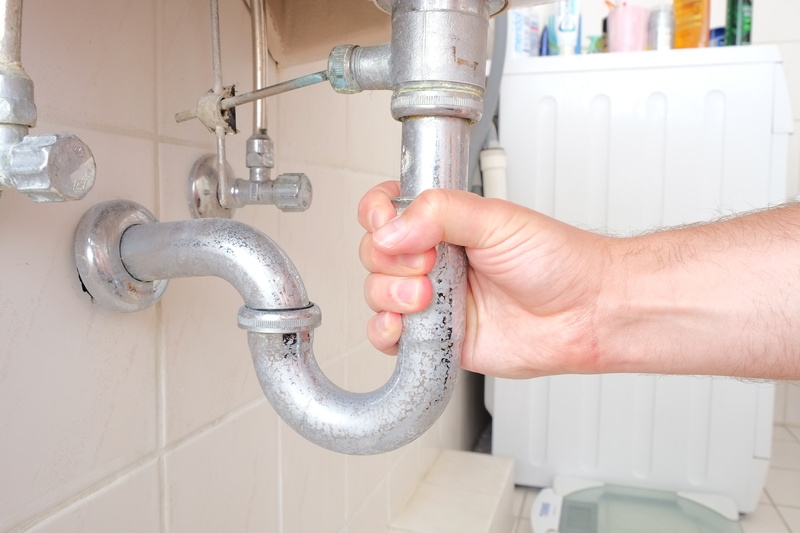 When we talk about the importance of hiring professionals to inspect your pipes, we emphasize that most of the plumbing in your house is hidden from sight. The freshwater pipes and drainpipes around your home are behind walls and cabinets, placed in the floors and ceilings, and in the case of the sewer line and water main, buried under the property.
When we talk about the importance of hiring professionals to inspect your pipes, we emphasize that most of the plumbing in your house is hidden from sight. The freshwater pipes and drainpipes around your home are behind walls and cabinets, placed in the floors and ceilings, and in the case of the sewer line and water main, buried under the property.
But there’s one piece of piping you can see and access easily: the p-trap. This is a basic pipe piece, but it does a crucial job in your home. We’d like to take an opportunity to explain the p-trap and its function.
The P-Trap Is the Curved Pipe Section Under a Drain
Go to the kitchen sink, open the cabinets beneath, and you’ll behold the p-trap in all its straightforward wonder: the curved pipe with the distinctive half-circle bend under the drain. You might think of it as “U”-shaped, but if you view the pipe section from the side, or detached from the plumbing (which is how plumbers often see it), you’ll see right away the “P” shape that gives it its name.
What the P-Trap Does
The p-trap is one of the oldest pipe formations in plumbing, going back to the earliest indoor plumbing and sewer systems. (Plumbing trivia: Alexander Cummings, a Scottish watchmaker and the first man to patent the flush toilet, invented the p-trap in 1775.) The curved shape, partnered with gravity, allows a p-trap to do a simple but necessary job, which is trap water. After water has sluiced down the drainpipe, an amount remains trapped in the curve’s dip, forming a barrier between the drain and the rest of the wastewater system.
This is an important job because sewer gas from the wastewater system tends to rise. Without a water barrier in the pipe to stop it, these foul fumes will waft from a drain into the house. The p-trap keeps your home from starting to smell like the sewer line buried underground.
Can a P-Trap Dry Out?
Yes, it can. When people call a plumber in Colchester, VT to complain about foul odors from a drain, it’s usually because all the water in the p-trap evaporated. You may have a sink in your home that sees little use, such as a small bar sink for entertaining, or sinks and showers located in frequently unoccupied guest bedrooms. Stopping bad odors from these drains only requires running water down the drain for less than a minute. This restores the water barrier in the p-trap.
Replacing the P-Trap
A p-trap can decay like other pipes in a home, and using chemical cleaners on drains may create leaks in this pipe section. Fortunately, it’s easy to find out when this happens because water will start to spill from the trap and create a noticeable puddle. We recommend calling a plumber right away when you have a damaged p-trap. A licensed plumber has the parts necessary to have the drainpipe replaced and the problem solved.







